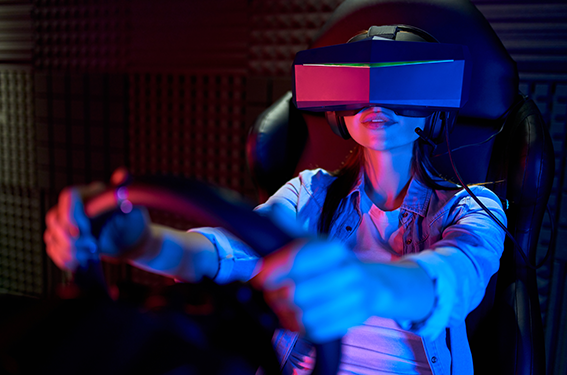Automotive
In a sector where production processes on an assembly line are the most common environments, 3D videos can be highly useful and informative to show these developments.
The option to create 3D interactive resources
Virtual Reality and Augmented Reality services make it possible to recreate processes for training and demonstration objectives.
In addition, augmented reality can provide extra data in the mixed reality that it creates, which are useful for the sector and its different processes.


What is a simulator?
A simulator is a virtual environment that is responsible for recreating situations in real conditions. The most common are those related to aviation and driving, making it possible to recreate real situations that may entail certain risks, but without putting users in danger.
They are largely used for staff training, but also for demonstrations or entertainment.
What is a car simulator like?
We could divide car simulators into two large groups:
- Training and demonstration oriented
- Entertainment oriented
In a business environment, the focus is mainly on the first case.
Training and demonstration-oriented car simulator
There can various levels involved in recreating a situation, from using a steering wheel and a seat with a screen to present the situation, to adding virtual reality glasses instead of screens, or to adding a hydraulic system, in addition to the features listed above, that can represent the physics of a vehicle.
The aim of all this is to re-create the situation you wish to represent in the most faithful manner possible.


What do we need to create a simulator?
The first, most essential thing is to develop a virtual project that represents the scene as requested.
This will be associated with a 3D model of interiors and surroundings, as well as a schedule that recreates the events that may arise in the scene.
After the simulator has been created
Once the project has been created and compiled, the next step is to associate it with a technology that can play it, either by means of monitors, with virtual reality glasses, and with hydraulic platforms that represent the physical aspects if they have been added. In short, a simulator must:
- Develop a project.
- Include devices to play the simulator (monitors, virtual reality glasses, or videowalls).
- Platforms that resemble the physics of the vehicle.
3D video or infographic projects
In the automotive sector, a 3D image or video is a significant help in explaining complex concepts or ones that simply would not be appreciated in reality as they are internal. Therefore, our customers within this sector usually request both static images or 3D videos where, thanks to technology, we can represent several layers at the same time for the piece or process, which would be impossible in fully operational reality.
This type of project serves both in explanatory and promotional ways for the product being presented.
Web development for companies in the automotive sector
For example, for companies that make car components, such as the car brands themselves, it is important for them to have a website with their corporate image that represents all of the brand’s values.
Companies in this sector are usually large international companies that typically have many offices around the world, and it is important for them all to be on the same page.
Typically, these websites are focused not only on brand awareness, but also on raising awareness about and promoting the company’s products.
To this end, creating landing pages can promote a specific product which is either a new release or highlight its importance at a specific moment in time.
Use of training environments and modules
As stated above, big companies usually have a large staff that requires training. Therefore, they usually have online platforms dedicated to training their employees. Dreamtech5 creates these platforms, and also develops training materials and equip them with 3D images or animations, to achieve greater user engagement with the content.









